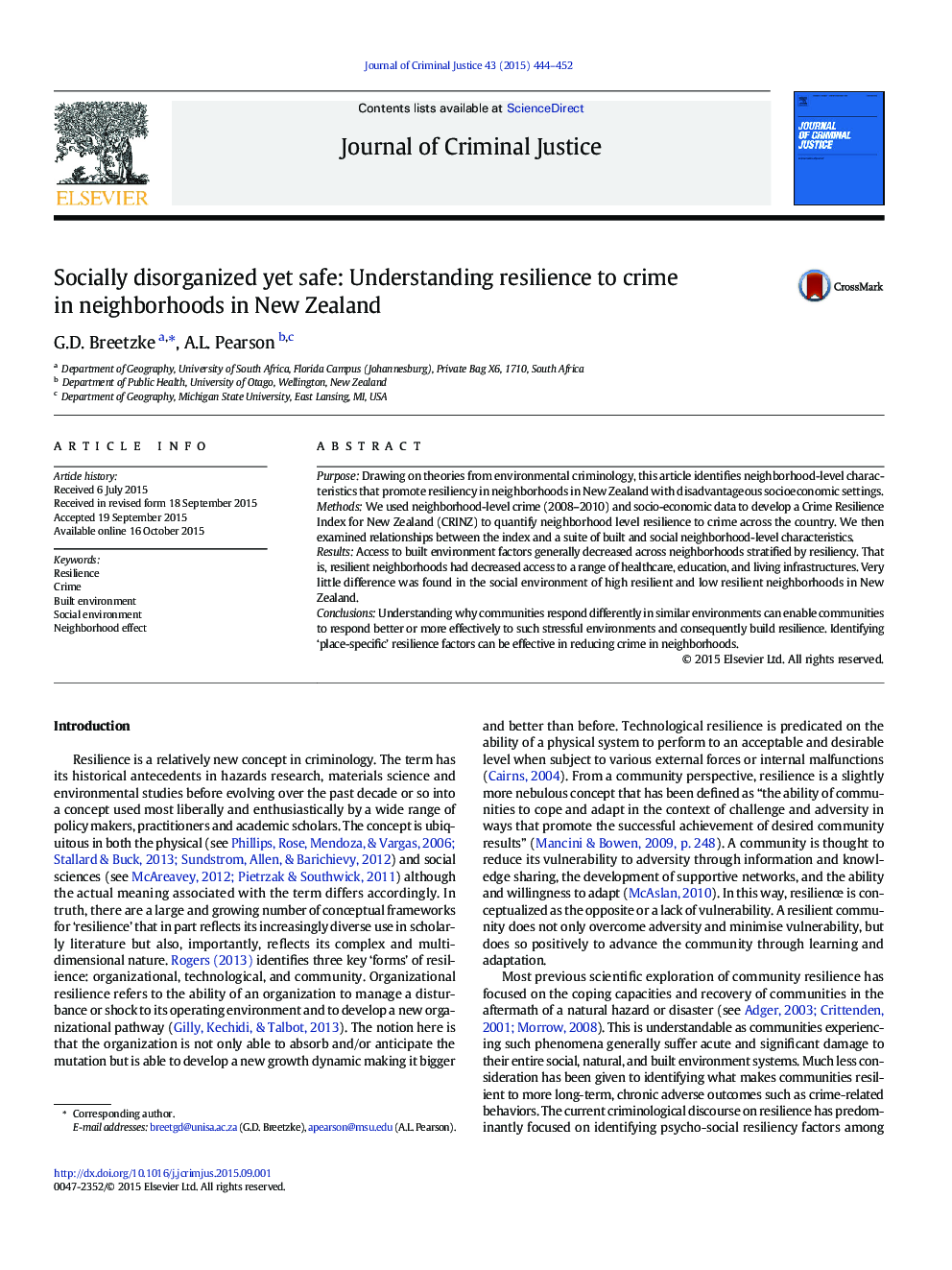| کد مقاله | کد نشریه | سال انتشار | مقاله انگلیسی | نسخه تمام متن |
|---|---|---|---|---|
| 882633 | 912007 | 2015 | 9 صفحه PDF | دانلود رایگان |
• Resilient neighborhoods in New Zealand experience low crime despite high risk.
• Resilient neighborhoods have decreased access to healthcare facilities and infrastructures.
• No difference in the social environment of neighborhoods stratified by resilience
• Identification of ‘place-specific’ resiliency factors can reduce social problems mind-set.
PurposeDrawing on theories from environmental criminology, this article identifies neighborhood-level characteristics that promote resiliency in neighborhoods in New Zealand with disadvantageous socioeconomic settings.MethodsWe used neighborhood-level crime (2008–2010) and socio-economic data to develop a Crime Resilience Index for New Zealand (CRINZ) to quantify neighborhood level resilience to crime across the country. We then examined relationships between the index and a suite of built and social neighborhood-level characteristics.ResultsAccess to built environment factors generally decreased across neighborhoods stratified by resiliency. That is, resilient neighborhoods had decreased access to a range of healthcare, education, and living infrastructures. Very little difference was found in the social environment of high resilient and low resilient neighborhoods in New Zealand.ConclusionsUnderstanding why communities respond differently in similar environments can enable communities to respond better or more effectively to such stressful environments and consequently build resilience. Identifying ‘place-specific’ resilience factors can be effective in reducing crime in neighborhoods.
Journal: Journal of Criminal Justice - Volume 43, Issue 6, November–December 2015, Pages 444–452
